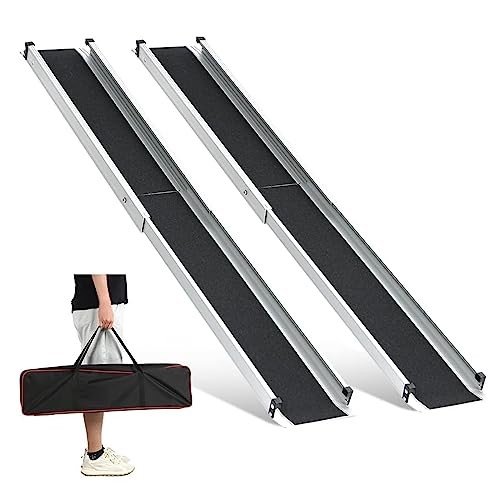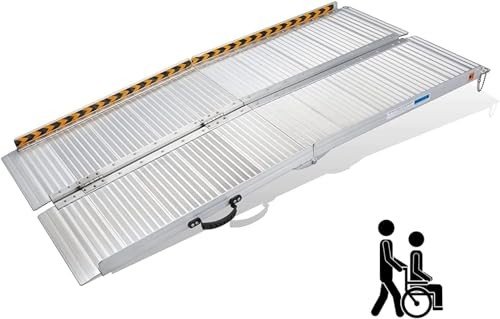
Portable Disabled Ramp
Add a reviewOverview
-
Founded Date August 30, 1984
-
Sectors Manufacturing
-
Posted Jobs 0
-
Viewed 6
Company Description
The Reason Why Disability Ramp Has Become Everyone’s Obsession In 2025
Understanding Disability Ramps: Essential Components for Accessibility
As societies increasingly recognize the value of inclusivity, the requirement for accessible infrastructures has taken center phase. Amongst the lots of adjustments that can be made to buildings and public spaces, disability ramps play a crucial function in making sure mobility for people with specials needs. This post will look into the fundamentals of disability ramps, their types, material choices, codes and regulations, finest practices for setup, and common questions surrounding these vital structures.
What is a Disability Ramp?
A disability ramp, frequently referred to as a wheelchair ramp, is a sloped surface developed to provide access to buildings, cars, or other elevated locations for people with mobility disabilities. These ramps are essential for offering equal access and promoting self-reliance for individuals with impairments, the senior, and others who may have difficulty with stairs.
Significance of Disability Ramps
The primary purpose of disability ramps is to help with motion and accessibility. Here are a couple of reasons why they are necessary:
- Legal Compliance: Many countries have laws needing public spaces to be available to all individuals, consisting of those with impairments.
- Inclusion: Disability ramps eliminate barriers, assisting people get involved more totally in society.
- Safety: Ramps decrease the risk of falls and mishaps compared to stairs, particularly in unfavorable weather.
| Importance of Disability Ramps | Explanation |
|---|---|
| Legal Compliance | Required by law in lots of jurisdictions |
| Inclusion | Fosters a sense of belonging and participation |
| Safety | Decreases the risk of mishaps and falls |
Kinds Of Disability Ramps
Disability ramps come in various types, each suited to particular environments and needs. Here’s a breakdown of common types:

- Portable Ramps: Lightweight and simple to carry, these ramps are perfect for vehicles and temporary setups.
- Repaired Ramps: Installed permanently in buildings or outdoor locations, repaired ramps are typically made from concrete or metal.
- Limit Ramps: Ideal for entrances, threshold ramps assist in smoother shifts in between different surface levels.
- Modular Ramps: These ramps are made from sections that can be gotten used to fit various locations, making them customizable and versatile.
| Type of Ramp | Description |
|---|---|
| Portable Ramps | Lightweight, movable, suitable for temporary usage |
| Fixed Ramps | Long-term installations for buildings or public locations |
| Threshold Ramps | Facilitate transitions at doorways |
| Modular Ramps | Personalized areas versatile to different surface and heights |
Products Used for Disability Ramps
The choice of product for a disability ramp is important for safety, resilience, and aesthetic appeal. Common products consist of:
- Wood: A popular choice due to its natural appearance, though it requires regular maintenance to avoid decay.
- Aluminum: Lightweight, rust-proof, and easy to install, aluminum ramps are an excellent choice for sturdiness.
- Concrete: Solid and long-lasting, concrete ramps are frequently used in repaired setups but need correct surface area treatment for safety.
- Rubber: An ideal option for portable ramps, rubber offers outstanding traction and shock absorption.
| Product | Advantages | Downsides |
|---|---|---|
| Wood | Aesthetically pleasing, customizable | Requires upkeep; can rot |
| Aluminum | Lightweight, rust-resistant, long lasting | Can be more costly than other options |
| Concrete | Strong, steady, ideal for permanent setups | Labor-intensive to set up; needs surface treatment |
| Rubber | Outstanding traction, shock-absorbent | Might not appropriate for all areas |
Laws and Standards
Comprehending the policies surrounding disability ramps is important for compliance and safety. In the United States, the Americans with Disabilities Act (ADA) supplies standards that consist of:
- Ramp Slope: The ADA recommends a slope ratio of 1:12 (one inch of height for every single 12 inches of ramp length).
- Width: Ramps should be at least 36 inches large to accommodate different mobility aids.
- Landings: Level landings need to be offered at the top and bottom of the ramp, as well as at intervals along longer runs.
Table: ADA Requirements for Disability Ramps
| Feature | Requirement |
|---|---|
| Ramp Slope | 1:12 ratio (1 inch vertical height = 12 inches length) |
| Minimum Width | 36 inches |
| Landing Length | Minimum of 60 inches on top and bottom |
| Surface Texture | Stable, company, and slip-resistant |
Finest Practices for Installing Disability Ramps
When setting up a disability ramp, it’s important to follow finest practices to guarantee safety and use:
- Assess the Location: Determine the best place for the ramp that abides by regional laws and does not block access.
- Design for Purpose: Choose a ramp type and product that fits the particular requirements, such as residential usage or public access.
- Visual Indicators: Use color contrast and signage to ensure the ramp shows up and identifiable for users with visual disabilities.
- Routine Maintenance: Inspect the ramp regularly to ensure it stays in good condition, inspecting for any indications of wear or damage.
Often Asked Questions (FAQ)
1. Who needs a disability ramp?
People utilizing wheelchairs, walkers, or crutches, in addition to the elderly or those recuperating from injuries, can gain from Disability Ramps [Https://www.yaekobatimon.top/health/ramps-for-the-disabled-accessibility-and-inclusion].
2. Can I develop a disability ramp myself?
Yes, if you have the necessary skills and tools. Nevertheless, it’s suggested to speak with experts or stick to regional building codes for security.

3. How do I figure out the length of the ramp?
The length of the ramp can be calculated based on the height it needs to access, following the recommended slope ratio of 1:12.
4. Exist moneying alternatives readily available for ramp installation?
Some non-profit organizations, government assistance programs, and neighborhood initiatives may use funding or resources for building accessible ramps.
5. What functions should I think about for my ramp?
Think about the slope, width, surface material, and security features like handrails, non-slip surface areas, and landings.
Disability ramps represent an important step in developing available environments for all individuals, particularly those with mobility difficulties. Understanding the various types, materials, guidelines, and finest practices for installing disability ramps is essential for ensuring security and compliance. As neighborhoods continue to aim for inclusivity, the installation of these ramps not only supports legal responsibilities however likewise promotes a culture that appreciates and values all members of society.
